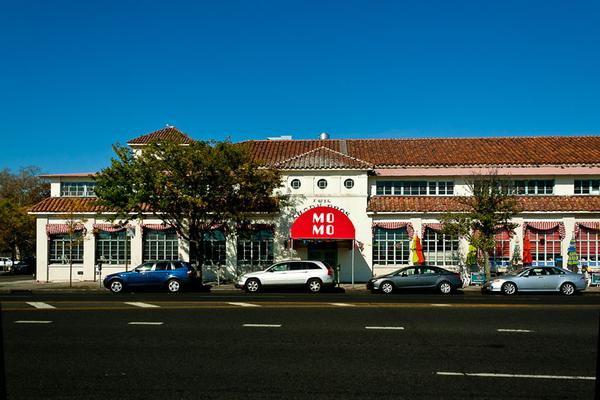
Photo by: Adi Talwar
MoMo restaurant on Emmons Avenue in Sheepshead Bay was one of the last to reopen, locals say. But at 40 percent of neighborhood business are not expected to return.
Nearly four in 10 households in the tri-state area that were damaged by Superstorm Sandy are still in need of repair, according to a survey released Thursday. That wasn’t news to Jameson Wells of the Gerritsen Beach Long Term Recovery Project.
“Any single household that is still engaged in the rehabilitation of their homes has run out of money and that is standard across the board,” Wells says. “It’s horrible, actually.”
The survey, by Enterprise Community Partners, found that 39 percent of households were still not fully repaired, and that low-income households and renters were especially far behind: Only half of those residents said the storm’s damage had been totally addressed.
Gerritsen Beach was mapped a Zone B community, which meant that residents were not required by law to evacuate. It’s why many families there decided to simply ride out the storm, choosing to evacuate only when the flood waters left them with no other choice. The evacuation maps have since been updated.
Infrastructure problems, psychological scars
According to reporting released this week by the Brooklyn Community Foundation (BCF), the neighborhood was victimized by more than the rising waters: “In Gerritsen Beach, a faulty sewage system, exposed power lines, and active waste plant during the storm were among the most problematic infrastructure failures.”
BCF’s report also noted: “In Gerritsen Beach, where nearly all basements and first floors were flooded, many families continue to live on their second floor.”
According to Wells, some residents have restored normalcy, while others haven’t. “Those that had savings or equitable insurance settlements are put back together, with a couple of exceptions in which people decided to completely rebuild,” he says. “There was so much damage, they just said, ‘I’m just going to just complete the whole thing.'”
Some families worked together to tackle long, expensive projects rather than go it alone. Issues like mold have proven more difficult to tackle. Wells says one family paid $9,000 to remove mold in an infected house. When the mold returned, there was no choice but to gut the entire home.
Nonprofits began participating in mold remediation because private companies seized on the opportunity to charge high fees for the work.
The Brooklyn Recovery Fund, a joint project of BCF, Chamber of Commerce and Borough President’s Office, says it has rebuilt 175 homes and done mold remediation in 216. It also is offering “ongoing mental health and counseling services for community members.”
“The psychological impact of Hurricane Sandy – both for survivors as well as first responders – was unprecedented,” the report by BCF reads. “In Gerritsen Beach, residents continually struggle to function on the day-to-day, simultaneously coping with the loss of possessions and stress of rebuilding without adequate resources.”
Now many Gerritsen Beach families are also struggling with how to afford flood insurance to protect themselves in case of another devastating storm.
“If someone doesn’t have money to get their house back together,” Wells asks, “do you think they have money for flood insurance?
Many families paid faithfully on their home insurance for decades and did not get settlements, he adds. Class action suits are already in the process of being started. “What were they paying for in good faith for all those years?” Wells wonders.
Not business as usual in Sheepshead Bay
In a statement this week, NYCHA General Manager Cecil House said the authority “has been working nonstop to ensure our residents, employees, buildings and grounds are better prepared for a potential hurricane or weather-related emergency.” He added: “Because we have planned in advance, we will be able to get restorations and repairs completed much more quickly.”
NYCHA residents were among those hardest hit by Sandy, not just by the storm’s damage but by the power outages that follows. Then, like other renters, NYCHA residents felt overlooked by aid programs.
“It was easy for these residents to fall through the cracks of the relief work, because so much of it continues to be geared toward landlords and homeowners,” says Vadim Shiglik, project director at Empower Sheepshead.
What’s more, a large percentage of residents at NYCHA projects like Sheepshead Bay, which has a population between 2,500 and 3,000, work locally. When the merchant sector was impacted, it hit the most vulnerable residents the hardest.
“These residents worked for many of the local merchants that suffered great losses,” Shiglik says.
According to the Brooklyn Recovery Fund, 85 percent of businesses in the area were denied SBA loans, while many who were approved couldn’t afford to take on more debt. Nearly 40 percent of Sheepshead Bay businesses are not expected to return, the Fund says.
According to Enterprise, 11235—the ZIP Code containing Sheepshead Bay—was the most impacted area of New York state, with 406 private homes judged to have sustained greater than $30,000 in damage, and 771 rental units deemed to have suffered “substantial” damage.
As Albany eyes reassessing the property tax structure, fears abound that the state’s revenue target will fall in part on the backs of families whose homes have lost their value, a proposition Wells and others say is adding insult to injury.
In both Sheepshead and Gerritsen, there are reminders large and small of the storm’s impact, a year later. A Craig’s List poster from Gerritsen recently made a candid sales pitch for an item touched by the waters. “It was working before Sandy, but it got wet,” said a seller of a gas-powered pump. “The engine is currently siezed [sic]. I don’t have time to work on it. I only have the intake hose, but that is the expensive one. $90 for it as it is.”







